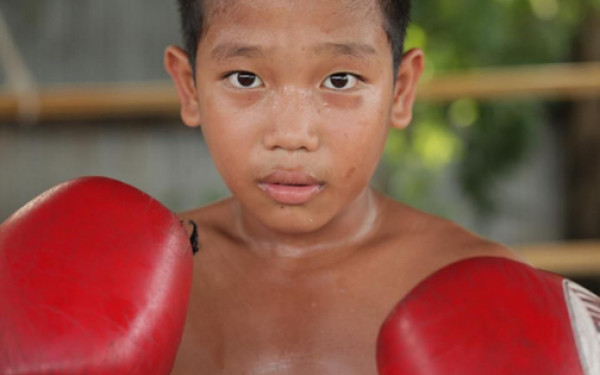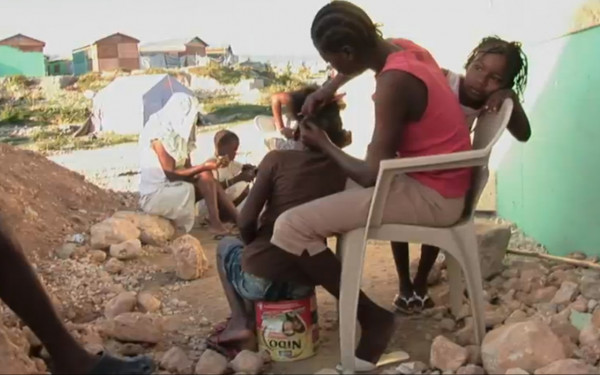Documentary portraying life at the world’s largest refugee camp makes Canadian debut
‘Wandering, a Rohingya Story’ poetically tells a tale of daily resilience
Mélanie Carrier and Olivier Higgin’s latest feature documentary, Wandering, A Rohingya Story made its Canadian debut last month. The Quebec City-based filmmakers take us into the daily lives of persecuted Rohingyas who have sought refuge in southeast Bangladesh.
When he first arrived in the Kutupalong refugee camp in southeast Bangladesh in January 2018, documentary photographer Renaud Philippe was struck by the humanitarian crisis at hand.
The camp’s existence precedes the Rohingya genocide that began in August 2017 in neighbouring Myanmar, which killed at least 6,700 and forced more than 800,000 to seek refuge behind the Bangladeshi border. The increased flow of incoming refugees turned Kutupalong into the world’s most populous camp, currently home to 700,000 refugees, despite its modest 13 square kilometres.
For more than 15 years, Philippe has made it his full-time job to cover conflict and humanitarian crises.
“It’s always the same frustration [for me],” he confessed. “[Here] we have such little care for what is going on elsewhere […] it makes no sense that we don’t talk about what’s happening to an important part of humanity, including the Rohingyas.”
Witnessing this frustration in one of Philippe’s Facebook posts, documentary filmmakers Mélanie Carrier and Olivier Higgins felt compelled to join his efforts to increase the Rohingya’s visibility. And so, when he returned to Kutupalong, Philippe was accompanied by Higgins. This time, the intention was not only to shoot stills; the pair spent almost a month pacing the camp’s muddy lanes, gathering hundreds of hours of videos.
_Renaud_Philippe_4_900_599_90.jpg)
“The idea was to make a short film […] but we quickly realized that this story could never be told in 12 minutes,” Carrier and Higgins recounted. The pair describe an overwhelming amount of material; testimonies, stories, emotions, images—more than enough to fuel the 88-minute film as well as an exposition at the Musée national des beaux-arts du Québec.
“We wanted to give the film some kind of poetic angle, despite the roughness of the subject, in order to tap into the public’s emotions differently […] but we didn’t know if that would be possible,” Carrier explained. That was until they met Kala Miya: a young Rohingya with a gift for languages who worked with Philippe during his first trip to the camp. He played a central role behind the scenes, arranging, conducting and translating interviews, and soon enough found a place at its forefront too, through his original prose.
Carrier and Higgins recounted reading Kala Miya’s poems for the first time on Facebook when it suddenly became evident that he should be the film’s thread of Ariadne. During an interview, Kala Miya described his pride and excitement to see his art promoted.
“We wanted to give the film some kind of poetic angle, despite the roughness of the subject, in order to tap into the public’s emotions differently.” — Mélanie Carrier
“I wrote 50 poems in two or three days,” he explained. “From there, I started uploading them to my Facebook page.” Eventually, his work was also picked up by a magazine based in South Africa. For him, inspiration came from within Kutupalong. “I thank the Rohingya youths in Bangladesh who write poems continuously […] You could say I learned from them.”
“Kala Miya’s story is fascinating,” Carrier said. “It’s his story, but in a way, it’s also that of everyone who lived in this camp,” including that of Mohammed Shofi—the narrator whose tempered, yet emotional tone, delivers Kala Miya’s prose.
A member of the Rohingya community in Quebec City, Mohammed left Myanmar with his family in 1990, amid increased violence against members of his community. He arrived in Kutupalong where he lived for 18 years, before landing in Canada in 2008. Though they never met in person, he and Kala Miya share a similar narrative and when Carrier and Higgins came to him with their project, he accepted right away.
_Renaud_Philippe_2_900_599_90.jpg)
“We built a small home studio,” Carrier said with a reminiscing smile, describing the room in the basement, with mattresses plastered against the walls where Mohammed was recorded. "It allowed us to take the time we needed to record the narration […] we wanted to take the time to get it right.” Since Rohingya is a mostly oral language, Kala Miya’s verses were written in English and had to be translated and adjusted to the visual pace of the film.—with unmistakable preciseness.
The result is a calculated rhythm; an equilibrium between what Carrier and Higgins describe as the film’s soft, ‘life’ scenes and its painful moments, where traumatic events are recounted.
Behind the lens, Philippe and Higgins remain discreet, leaving it to the refugees to tell—and show—their story as it continues to unfold. A mother brushes her daughter’s hair as she giggles; a group of men build a house using machetes and bamboo trunks; small children watch attentively as a kite flies above them—these are some of the slice-of-life scenes that make for an important aspect of the documentary.
_Renaud_Philippe_3_900_600_90.jpg)
They are quiet, yet compelling portraits for which an external narrator’s explanations would be superfluous, or even a hindrance to experiencing the essence of the subject at hand.
“We wanted to avoid a typical journalistic reporting approach,” said Higgins, “the idea was to go for a more artistic, a more emotional, cinematic angle where the information lies in the images and the sounds.”
In a sea of documentaries examining human crises, it is precisely this withdrawal that distinguishes Wandering, A Rohingya Story. The result—an enthralling collection of visual and audible moments—is all the more human, penetrating, because of it.
Wandering, A Rohingya Story is available online on Cinémas Beaubien, du Parc & du Musée and Cinéma Moderne’s platforms. An exposition, also entitled Wandering, will also open to the public, for free, at the Musée national des beaux arts du Québec this summer.
The feature documentary is part of the 10th Belleville Downtown DocFest. It also presented as the closing film of the Rendez-vous du cinéma québécois et francophone de Vancouver and has won, among others, the Global Docs Competitive Section Award at DocsMX.

_Renaud_Philippe_1_900_600_90.jpg)
_600_832_s.png)

__600_375_90_s_c1.jpg)


